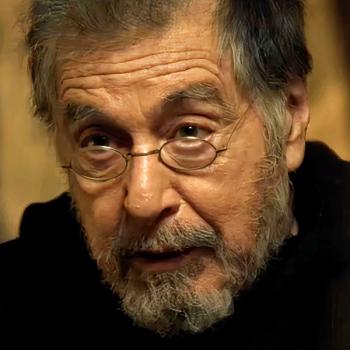
History looks back, but journalism looks around — especially in the midst of war.
Journalist and diplomat Henry Grunwald once observed:
Journalism can never be silent: that is its greatest virtue and its greatest fault. It must speak, and speak immediately, while the echoes of wonder, the claims of triumph and the signs of horror are still in the air.
That’s never more evident than in 20 Days in Mariupol, a feature-length documentary premiering Tuesday, Nov. 21, on PBS’ Frontline.
What Is 20 Days in Mariupol About?
The award-winning film is a combined effort of Frontline and The Associated Press (AP), and records the experiences of AP journalists in the Ukrainian city as invading Russian forces besiege it in the winter of 2022.
UPDATE: You can now stream the entire documentary here at its homepage at PBS.org.
From APNews.com:
The 94-minute film, a joint production by The Associated Press and PBS “Frontline,” has been met with critical acclaim and an audience award at the Sundance Film Festival. AP journalist Mstyslav Chernov directed the movie from 30 hours of footage shot in Mariupol in the opening days of the war.
Chernov and AP colleagues Evgeniy Maloletka, a photographer, and producer Vasilisa Stepanenko were the last international journalists in the city before escaping.
The award-winning film can’t be considered a “balanced” view of what happened in Mariupol, since we didn’t have international journalists embedded with the Russian military.
Instead, it tracks Ukrainian AP reporters, the last team of international journalists left in the city. They record what they see around them during the assault, and then struggle to get their footage uploaded to the outside world.
If journalism is a rough draft of history, 20 Days in Mariupol shows a rough draft of journalism, as we go from run-and-gun footage to seeing how it was later broadcast.
Watching the Film on the Big Screen
I saw 20 Days in Mariupol (the city is named for the Virgin Mary) in a recent screening at the Museum of Tolerance in Los Angeles. The multimedia institution was created to examine racism and prejudice around the world, with a strong focus on the Holocaust.
The same museum shortly afterward played host to a screening of graphic footage from Hamas’ Oct. 7 assault on Israel (protests accompanied that showing, but the one I went to was remarkably quiet).
20 Days in Mariupol is a hard film to watch, especially segments that deal with attacks on children, from teens to toddlers, and the doctors who try to save them.
The film is unnerving, as a modern, Western city — some refugees shelter in a slick, well-equipped gym — is reduced to smoking rubble. Women with manicures and stylish winter coats huddle, sobbing, in hallways to avoid explosive shells falling all around them.
But, because 20 Days in Mariupol combines the raw footage with snippets of the finished news reports, along with other reports on Russia’s reaction to the footage, it gives greater context to how news is assembled and interpreted.
Although soldiers appear here and there, most of the film deals with frightened and bewildered civilians. As cell service and Internet become spotty or vanish, they have no real idea of what’s happening around them.
Hearing From the Filmmaker
On hand to discuss the film with Deadline Hollywood documentary editor Matthew Carey was director/co-producer Mstyslav Chernov.
He’s a videographer, photographer and war correspondent, who has reported on many conflicts, including in Ukraine, Iraq and Syria.

Here are some excerpts of what Chernov had to say (edited for length and clarity).
On covering war:
War is very complex thing. And when you are in the conflict zone, you have so many questions about nature of journalism, about nature of war, of humanity, history.
And the only way to address those questions for me was either writing, which I also do or making a longer-form documentary. I did not have a chance to do that. I was very focused on short use dispatches always in the middle of action.
But in about day seven, I think when the siege was clear, and it was clear there is no one reporting, I knew that everything I record is important. Every photo is important. Every shot of a video I do is crucially important, because it was just like an information black hole.
On the importance of using video — with its timestamps and geotags — to create proof that something happened:
Journalists are not soldiers, although information in modern world became a weapon, and journalists are considered to be the soldiers or tools for this weapon.
Therefore they’re more and more becoming targets. And it’s not only in totalitarian or authoritarian countries, even in democratic countries, trust is declining, and attacks on journalists becoming more common.
Whenever we were editing the film, and I was narrating it, it was quite important to find the right tone for it to not moralize anyone, to not impose my own emotions, which are very strong emotions, but still I’m an international journalist.
So not impose my own emotions on audience, giving up context to make their own judgments, because that’s the only way how we can fight misinterpretation.
The importance of recording everything and making sure it’s out there, because in the modern world, and this is frustrating, but this is our reality. If we don’t tell a full story, if you don’t preserve this tragedy in the form of film or literature, it’s going to be just lost the next day.
Ultimately why we were so worried about taking this footage out of the city, because it has [metadata] written in the shot. And these are original files.
I don’t say it will be necessarily used in the court trials and everything and investigations, but it might. So yeah, we just have to work together with the judicial system. It is a very hard question.
Word of Warning About 20 Days in Mariupol
Most PBS stations will air 20 Days in Mariupol on Tuesday, Nov. 21, at 10 p.m. ET/PT. Parents should be aware that it contains graphic footage, only minimally blurred.
While the film could be a valuable lesson in current events and the stark reality of war, it’s most suitable for mature teens and up.
Images: (top) CREDIT: AP Photo/Mstyslav Chernov; (embedded) Kate O’Hare
Don’t miss a thing: Subscribe to all that I write at Authory.com/KateOHare














